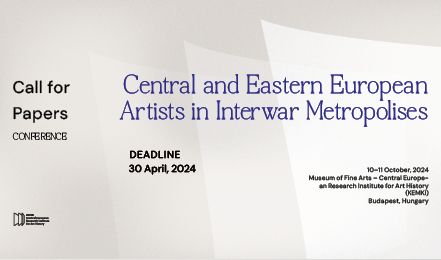‘interwar’
Elérhetőek a Central and Eastern European Artists in Interwar Metropolises konferencia előadásai
The recordings of the international conference, held in 2024 in connection with the „Organising the Spectacle” Research on the Avant-garde organized by the Research Department, are now available on the conference website and on the KEMKI Youtube channel . Feel free to explore!
Angela Lampe: The Cold Order: A Review of Exhibition Germany/1920s/ New Objectivity/August Sander - Sociological Aspects of the Interwar Years
… this lecture seeks to shed light on the ambiguities of this new cold order, which, in the interwar years, particularly conditioned life in German metropolises. As Robert Musil summed up in 1930 in his great novel Der Mann ohne Eigenschaften (The Man Without Qualities), “One has gained reality and lost dreams.” Angela Lampe began her career at the Kunsthalle Bielefeld in Germany after a PhD in art history at the Sorbonne University Paris. Since 2005 she is a curator of the …
Éva Forgács: Challenging National Art Histories
The great number of émigrés in the interwar period challenges the concept of national art historical narratives. If an artist, having been raised and educated in Hungary, chooses to live in France, Germany, or the US, to which country’s culture does s/he belong? Does artistic formation weigh as much as the new context that allowed him/her to develop as an artist? Can his/her achievements be seen originating from their country, are …
Central and Eastern European Artists in Interwar Metropolises
… the relocation of Central and Eastern European visual artists to urban centres specifically in the interwar period. These often followed patterns: artists with formal art training included travel as part of their curriculum, financed by various funds or grants; changes in political regimes forced others to leave their home countries for shorter or longer periods; and most enjoyed the help of personal, professional or political networks while abroad. In addition to analysing individual …
CFP: Central and Eastern European Artists in Interwar Metropolises
… for the relocation of Central and Eastern European visual artists to urban centres in the interwar period often followed patterns: those with formal art training included travel as part of their curriculum, financed by various funds or grants; changes in political regimes forced others to leave their home countries for shorter or longer periods; and most enjoyed the help of personal, professional or political networks while abroad. In addition to analysing individual cases and …




